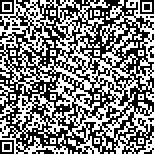| 摘要: |
| [摘要] 目的 探讨三种分级标准及列线图在我国胃肠道间质瘤(GIST)患者中的应用价值。方法 (1)回顾性分析2005-01~2018-07广西壮族自治区人民医院收治并具有完整病理及随访资料且手术完整切除的163例原发GIST患者的临床及随访资料;(2)采用Fletcher、Miettinen、2018NIH改良版对163例GIST进行危险度评估,比较Fletcher、Miettinen和NIH2008分级的准确度;(3)建立列线图模型,评估其应用价值。结果 (1)Fletcher、Miettinen和NIH2008三种标准的极低危组和低危组的无瘤生存时间均显著高于中危组和高危组(P<0.05),极低危组和低危组的无瘤生存时间差异无统计学意义(P>0.05),中危组和高危组的无瘤生存时间差异无统计学意义(P>0.05);(2)分别做NIH2008改良版、Miettinen、Fletcher分级对结局的ROC曲线,得到曲线下面积(AUC)分别为0.757、0.760、0.767;(3)运用R语言建立列线图模型,校准图形接近于斜率为1的直线,列线图的AUC为0.768(95%可信区间:0.696~0.831)。结论 Fletcher、Miettinen和改良版NIH2008三种分级标准都能够有效地对GIST术后患者的复发风险进行评估,Fletcher标准操作方便,但可能会误判不同部位的GIST术后复发的风险;改良版NIH2008标准准确性高,操作方便;列线图可以为GIST患者进行较为准确的、个体化的术后无复发生存率预测,但操作复杂。 |
| 关键词: 胃肠道间质瘤 复发风险评估标准 外科手术 |
| DOI:10.3969/j.issn.1674-3806.2019.11.04 |
| 分类号:R 735.2 |
| 基金项目:广西医疗卫生适宜技术开发与推广应用项目(编号:S201642);广西卫健委科研项目(编号:Z20180700);广西消化疾病临床医学研究中心建设基金资助项目(编号:桂科AD17129027) |
|
| A clinical comparative study of three risk assessment criteria and a nomogram for recurrence of gastrointestinal stromal tumors after surgery |
|
ZHANG Dao-tong, LI Ze-lun, HUANG Liang, et al.
|
|
Department of Gastrointestinal Peripheral Vascular Surgery, the People′s Hospital of Guangxi Zhuang Autonomous Region, Nanning 530021, China
|
| Abstract: |
| [Abstract] Objective To explore the application value of three classification criteria and nomogram in Chinese patients with gastrointestinal stromal tumors(GIST). Methods (1)The clinical and follow-up data of 163 GIST patients who had complete pathology and follow-up data and received complete surgical resection in the People′s Hospital of Guangxi Zhuang Autonomous Region between January 2005 and July 2018 were collected and retrospectively analyzed. (2)163 cases of GIST were evaluated for risk assessment by Fletcher, Miettinen and NIH2008 modified version, the accuracy of Fletcher, Miettinen and NIH2008 classifications were compared. (3)The nomogram model was established and its application value was evaluated. Results (1)For the criteria of Fletcher, Miettinen and NIH2008, the tumor-free survival time of the very low-risk group and the low-risk group were significantly longer than those of the intermediate-risk group and the high-risk group(P<0.05), but there was no significant difference in tumor-free survival time between the very low-risk group and the low-risk group(P>0.05) and there was no significant difference in tumor-free survival time between the intermediate-risk group and the high-risk group(P>0.05). (2)The ROC curves of NIH2008 modified version, Miettinen and Fletcher classifications on outcomes were established, and their the area under the curves(AUCs) were 0.757, 0.760 and 0.767, respectively. (3)The nomogram model was established using R language. The alignment pattern was close to a straight line with slope 1, and AUC of the nomogram was 0.768(95%CI: 0.696~0.831). Conclusion The three classification criteria of Fletcher, Miettinen and NIH2008 modified version can effectively assess the recurrence risk of GIST patients after surgery. Fletcher is convenient, but may misjudge the risk of recurrence of GIST in different parts. NIH2008 modified version has high accuracy and convenient operation. The nomogram can accurately and individually predict the postoperative recurrence risk of GIST for GIST patients, but has complicated operation. |
| Key words: Gastrointestinal stromal tumors(GIST) Risk assessment criteria for recurrence Surgery |

